
Majestic Peaks of Spitzkoppe: Namibia's Enchanted Granite Wonderland
Discover Spitzkoppe in Namibia: A breathtaking granite wonderland with ancient rock formations, rich cultural history, and unrivaled stargazing opportunities.
Spitzkoppe, often referred to as the 'Matterhorn of Namibia,' is a stunning granite formation rising sharply from the flat plains of the Namib Desert. These ancient rock formations, sculpted by millions of years of wind and weather, create a landscape that is both dramatic and serene. The highest peak reaches about 1,728 meters above sea level, offering awe-inspiring panoramic views that captivate every visitor. Spitzkoppe is a paradise for rock climbers, hikers, and nature lovers. The rock formations provide a myriad of climbing routes, ranging from easy scrambles to challenging technical climbs. For those who prefer a more leisurely pace, numerous walking trails meander through the area, offering the chance to explore its unique flora and fauna. The natural rock arches and hidden caves are perfect spots for photography and quiet reflection. The area is also rich in history and culture. Ancient San rock paintings can be found scattered throughout the site, providing a glimpse into the lives of the early inhabitants of the region. Camping under the stars at Spitzkoppe is an unforgettable experience, with the clear desert skies offering some of the best stargazing opportunities in the world. Whether you're seeking adventure, tranquility, or a connection to history, Spitzkoppe has something to offer every traveler.
Local tips in Spitzkoppe
- Bring plenty of water and sun protection; the desert climate can be harsh.
- Consider hiring a local guide to explore the ancient San rock paintings.
- Camping under the stars is highly recommended; book in advance to secure a spot.
- Best visited during cooler months (May to September) to avoid extreme heat.
- Wear sturdy hiking boots for exploring the rocky terrain.
Majestic Peaks of Spitzkoppe: Namibia's Enchanted Granite Wonderland
Spitzkoppe, often referred to as the 'Matterhorn of Namibia,' is a stunning granite formation rising sharply from the flat plains of the Namib Desert. These ancient rock formations, sculpted by millions of years of wind and weather, create a landscape that is both dramatic and serene. The highest peak reaches about 1,728 meters above sea level, offering awe-inspiring panoramic views that captivate every visitor. Spitzkoppe is a paradise for rock climbers, hikers, and nature lovers. The rock formations provide a myriad of climbing routes, ranging from easy scrambles to challenging technical climbs. For those who prefer a more leisurely pace, numerous walking trails meander through the area, offering the chance to explore its unique flora and fauna. The natural rock arches and hidden caves are perfect spots for photography and quiet reflection. The area is also rich in history and culture. Ancient San rock paintings can be found scattered throughout the site, providing a glimpse into the lives of the early inhabitants of the region. Camping under the stars at Spitzkoppe is an unforgettable experience, with the clear desert skies offering some of the best stargazing opportunities in the world. Whether you're seeking adventure, tranquility, or a connection to history, Spitzkoppe has something to offer every traveler.
When is the best time to go to Spitzkoppe?
Iconic landmarks you can’t miss
Small Bushmans Paradise
Explore the stunning rock formations and ancient art of Small Bushmans Paradise, a historical landmark in Namibia rich in cultural heritage and natural beauty.
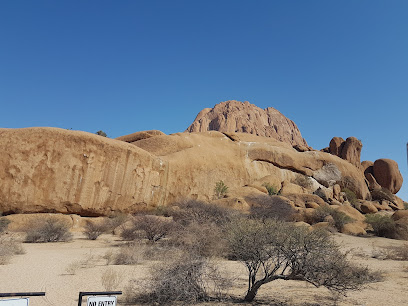
Spitzkoppen Community Campsite
Discover the breathtaking landscapes and cultural richness of Spitzkoppen Community Campsite, a premier destination for nature lovers in Namibia.
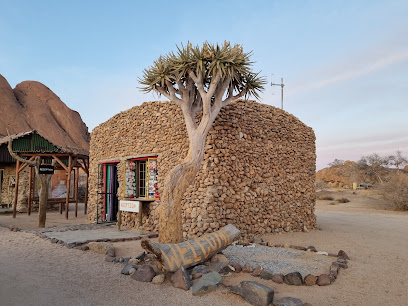
Rock Pool Spitzkoppe
Discover the captivating beauty of Rock Pool Spitzkoppe, a natural oasis in Namibia's Erongo region, perfect for adventurers and nature lovers.
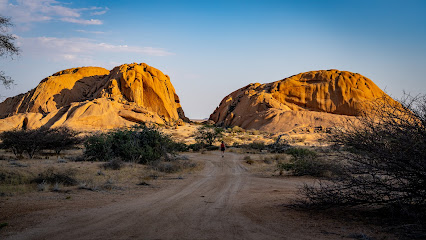
Grosse Spitzkoppe
Explore Grosse Spitzkoppe, a breathtaking granite peak in Namibia, perfect for hiking, photography, and experiencing the natural beauty of Africa.
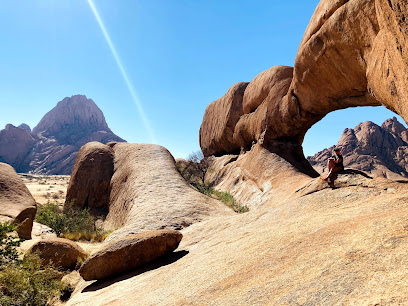
Rock Arch, Spitzkoppe
Discover the breathtaking Rock Arch at Spitzkoppe, a natural wonder in Namibia, rich in history and stunning landscapes.
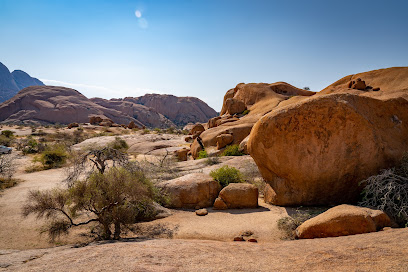
Grosse Spitzkuppe
Discover Grosse Spitzkuppe, Namibia's iconic mountain peak, where stunning landscapes and rich biodiversity await adventurers and nature lovers alike.
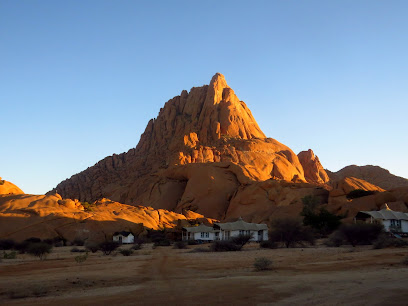
Spitzkoppe Village
Discover the breathtaking beauty and cultural richness of Spitzkoppe Village, a hidden gem in Namibia perfect for adventure and relaxation.
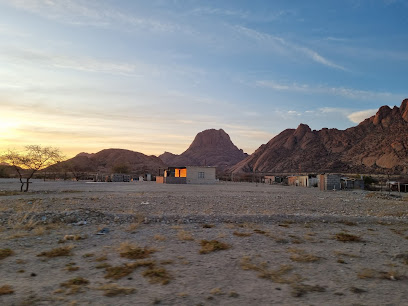
Unmissable attractions to see
Namib-Naukluft National Park
Discover the breathtaking landscapes, unique wildlife, and rich cultural heritage of Namib-Naukluft National Park, a true natural wonder in Namibia.
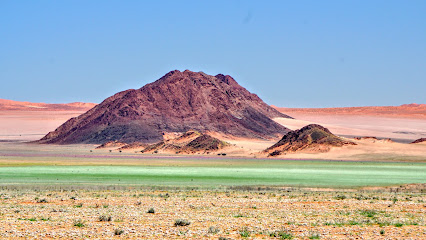
Desert explorers adventure centre
Discover thrilling adventures at the Desert Explorers Adventure Centre in Swakopmund, where the Namib Desert's stunning landscapes await.
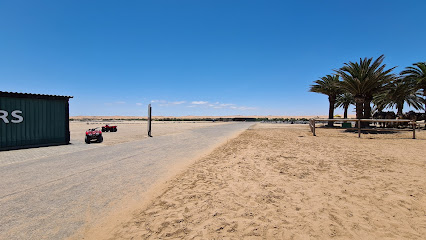
Swakopmund Museum
Explore Namibia's heritage at Swakopmund Museum, where history, culture, and nature intertwine in captivating exhibits.
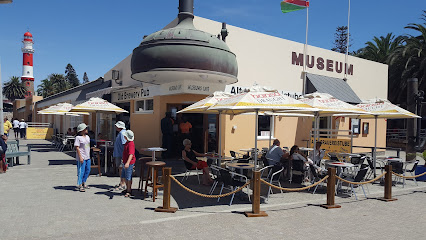
Kristall Galerie
Explore the enchanting world of gemstones at Kristall Galerie, a premier museum in Swakopmund showcasing nature's exquisite treasures.
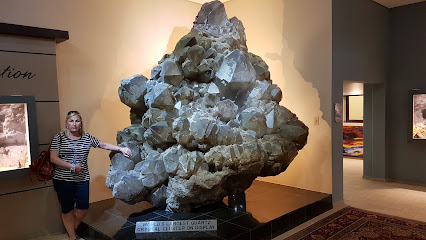
National Marine Aquarium
Explore the vibrant marine life of Namibia at the National Marine Aquarium in Swakopmund, a family-friendly attraction filled with wonder and education.
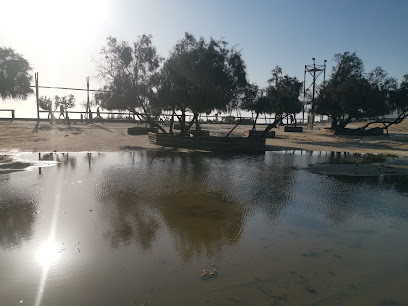
Swakopmund Mole
Explore the breathtaking views of Swakopmund Mole, where stunning ocean vistas meet the charm of Namibia's coastal landscape.
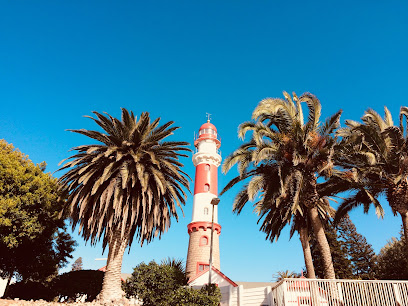
Okonjima Nature Reserve
Explore the beauty of Okonjima Nature Reserve, a sanctuary for wildlife and a haven for nature lovers in Namibia.
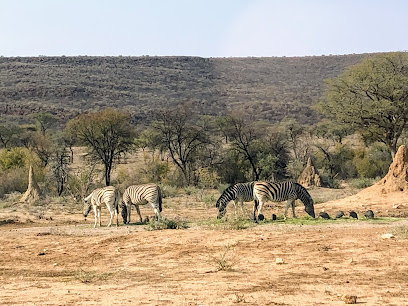
Zeila Shipwreck Namibia
Uncover the haunting beauty of the Zeila Shipwreck in Namibia, where history meets stunning coastal landscapes.
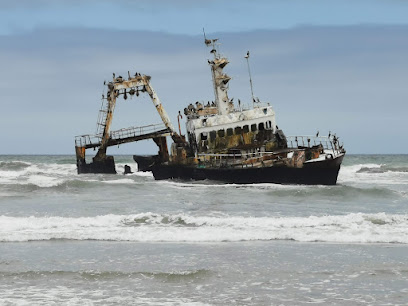
Waterberg Plateau National Park
Discover the breathtaking landscapes and diverse wildlife of Waterberg Plateau National Park, a true gem of Namibia's natural beauty.

Snake Park
Explore the enchanting Snake Park in Swakopmund, where diverse reptiles await to educate and inspire visitors with their fascinating beauty.
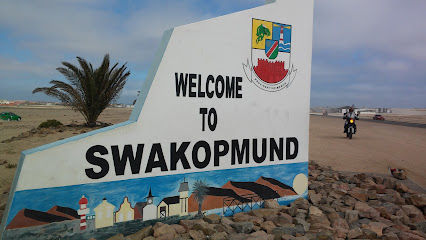
Etosha Pan Lookout
Discover the breathtaking vistas of Etosha Pan Lookout, an iconic destination in Namibia's spectacular wildlife-rich landscape.
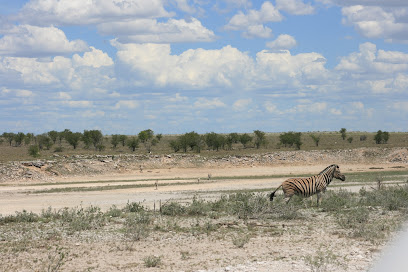
Tommy's Living Desert Tours
Experience the captivating beauty and unique wildlife of the Namib Desert with Tommy's Living Desert Tours in Swakopmund, Namibia.
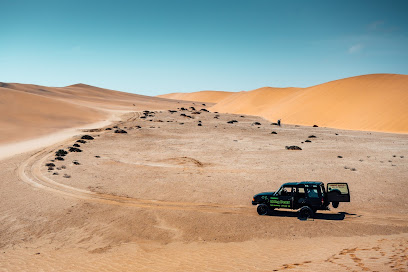
Big Daddy Dune
Experience the towering heights and stunning vistas of Big Daddy Dune, a breathtaking natural wonder in Sossusvlei, Namibia.
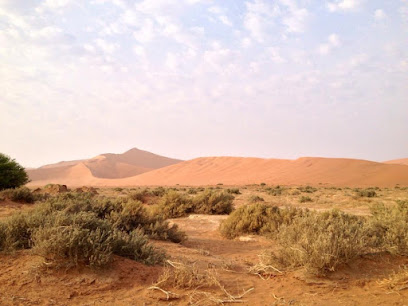
Swakopmund Paintball Centre & Adventure Park
Discover thrilling adventures at Swakopmund Paintball Centre & Adventure Park, where excitement meets stunning landscapes in Namibia.

The Bridge
Experience the breathtaking beauty and adventure at The Bridge, a majestic natural formation in Namibia that captivates every visitor.
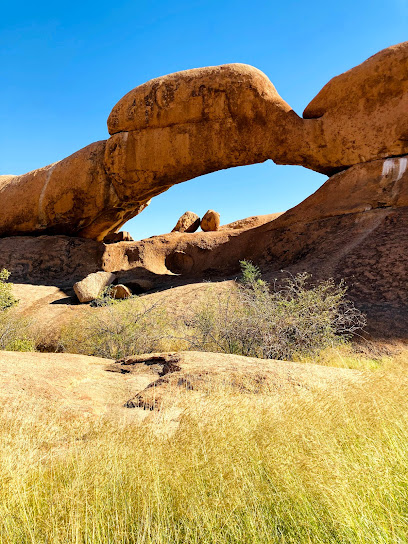
Essential places to dine
Joe's Beerhouse
Discover authentic Namibian cuisine and vibrant nightlife at Joe's Beerhouse in Windhoek.
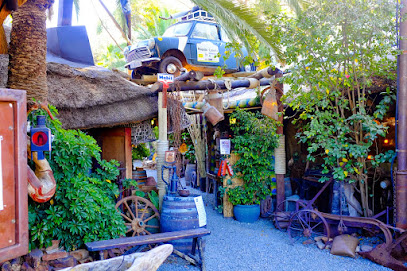
The Tug Restaurant
Experience exquisite coastal dining at The Tug Restaurant in Swakopmund, where local flavors meet stunning ocean views.
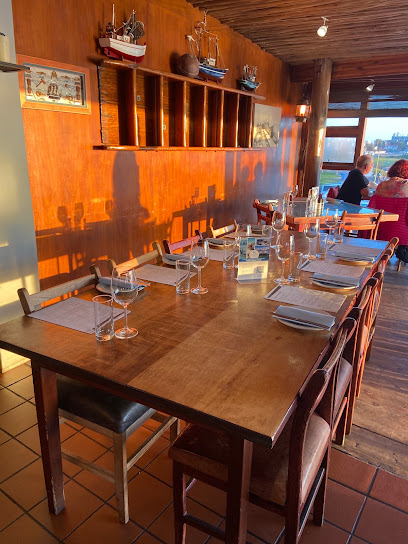
Swakopmund Brauhaus
Discover authentic German cuisine at Swakopmund Brauhaus – where hearty flavors meet local charm in Namibia's coastal paradise.
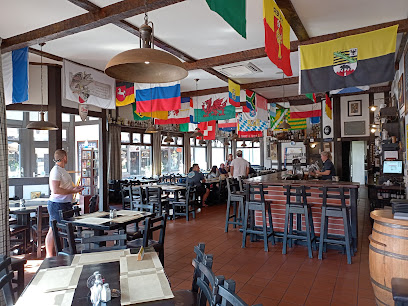
Altstadt Restaurant
Discover authentic German and seafood cuisine at Altstadt Restaurant in Swakopmund – a culinary gem perfect for families and food lovers alike.
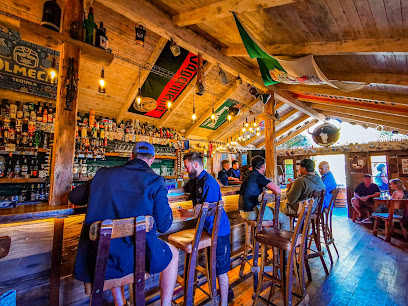
Jetty 1905 Restaurant
Experience exquisite seafood and stunning ocean views at Jetty 1905 Restaurant in Swakopmund, Namibia – where dining meets coastal beauty.
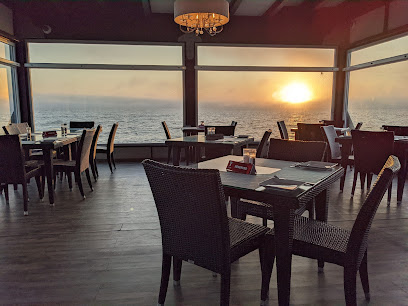
BlueGrass
Experience the vibrant flavors of Namibia at BlueGrass, Swakopmund's top restaurant blending local cuisine with international flair.
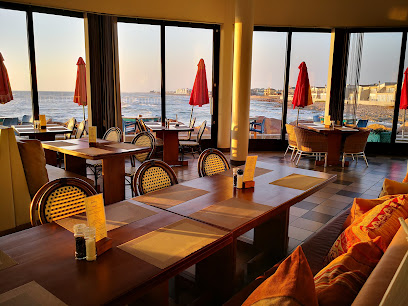
Kücki's Pub
Discover Kücki's Pub in Swakopmund for delicious food and vibrant nightlife; indulge in local flavors like the best apple pie Namibia has to offer.
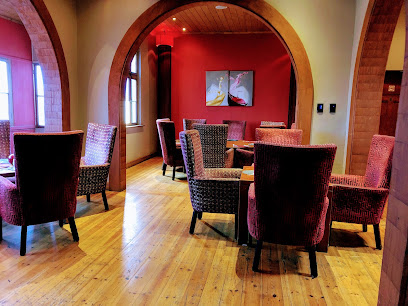
Goanikontes Restaurant
Experience authentic Namibian cuisine at Goanikontes Restaurant amidst breathtaking landscapes.
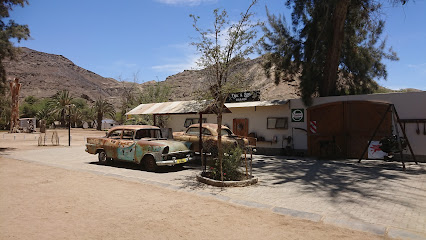
Farmhouse Deli
Experience the flavors of Namibia at Farmhouse Deli in Swakopmund – where fresh ingredients meet stunning ocean views.
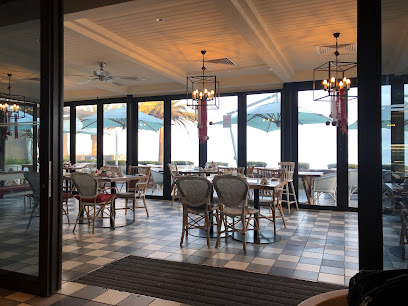
Lighthouse Restaurant Swakopmund
Experience exquisite dining at Lighthouse Restaurant in Swakopmund—where fresh seafood meets stunning ocean views.
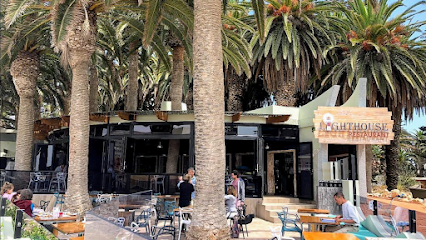
Old Sailor Swakopmund
Experience delicious coastal cuisine at Old Sailor Swakopmund, where fresh seafood meets Namibian hospitality in a charming seaside setting.

Old Steamer Restaurant
Experience delightful seafood dining at Old Steamer Restaurant in Swakopmund – where local flavors meet oceanic charm.
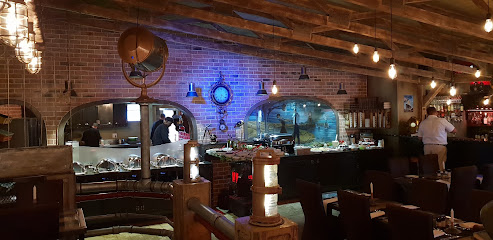
Spitzkoppe Community Restcamp
Experience Nature's Majesty at Spitzkoppe Community Restcamp - A Unique Lodging Experience Amidst Iconic Namibian Landscapes.
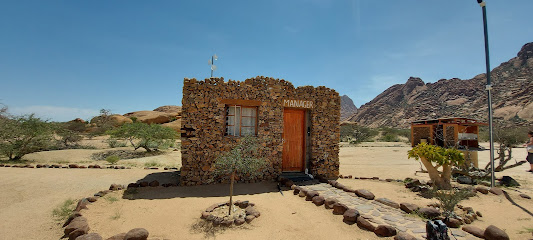
The Wreck Restaurant
Experience the best of Namibian cuisine at The Wreck Restaurant in Swakopmund – where fresh seafood meets stunning ocean views.

Spitzkoppe
Explore Spitzkoppe: A Stunning Mountain Peak in Namibia Offering Breathtaking Views and Adventure Opportunities.
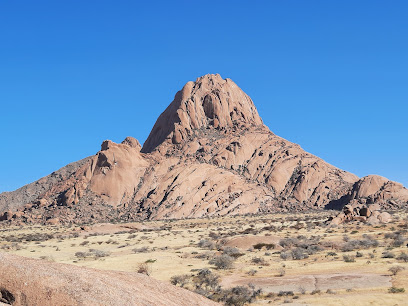
Markets, malls and hidden boutiques
Spitzkoppe Community Restcamp
Discover the stunning landscapes and vibrant culture at Spitzkoppe Community Restcamp, a perfect lodging experience in Namibia's wilderness.
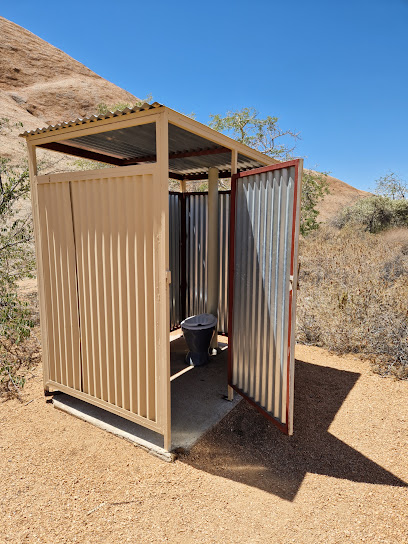
Spitzkoppe
Explore Spitzkoppe, Namibia's iconic mountain peak, known for its stunning granite formations, rich cultural history, and breathtaking landscapes.
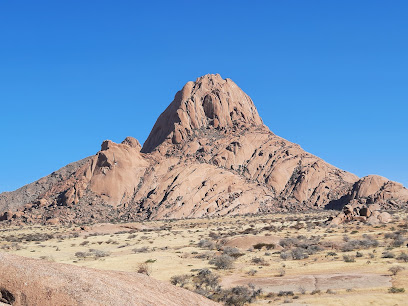
Spitzkoppe Tented Camp and Campsites
Discover the tranquility and adventure of Spitzkoppe Tented Camp, where stunning landscapes meet rich cultural experiences.

Spitzkoppen Lodge
Discover the serene beauty of Spitzkoppen Lodge, where stunning landscapes meet exceptional comfort in the heart of Namibia.

Spitzkoppe Camping
Experience the breathtaking landscapes and outdoor adventures at Spitzkoppe Camping, a hidden gem in the heart of Namibia's wilderness.
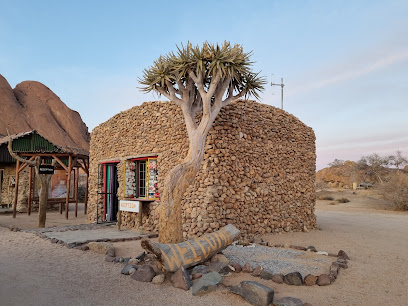
Spitzkoppen Community Campsite
Explore the wonders of Spitzkoppen Community Campsite, a serene oasis of granite formations and rich cultural heritage in Namibia.
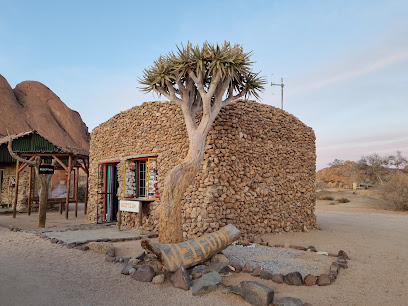
Uiba Oas Crystals Market
Explore the Uiba Oas Crystals Market, an enchanting shopping paradise filled with stunning gemstones and local treasures in the heart of Namibia.
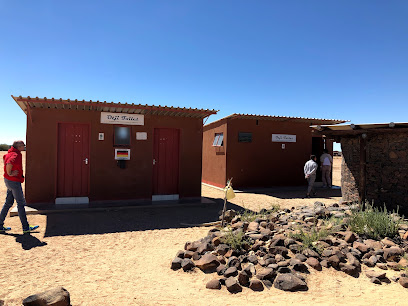
PEP Usakos
Explore PEP Usakos for a complete range of stylish clothing for the whole family in the heart of Namibia's charming Usakos.
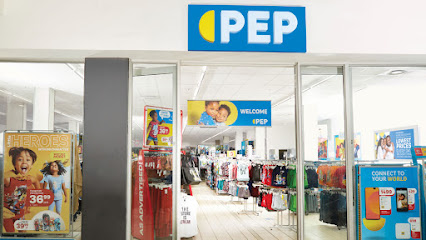
Kavita Craft Market Swakopmund
Explore the vibrant Kavita Craft Market in Swakopmund, where local artisans showcase unique Namibian handicrafts and treasures.
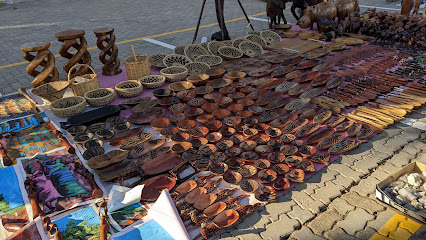
Saridao Mini Market
Explore the vibrant Saridao Mini Market in Spitzkoppe Village for fresh produce, local meats, and a taste of Namibian culture.
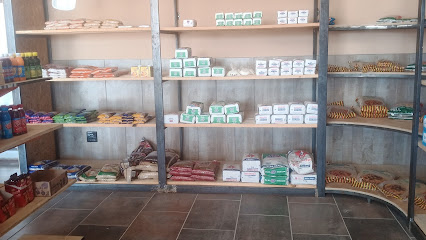
Rock Arch, Spitzkoppe
Explore the stunning Rock Arch of Spitzkoppe, a historical landmark that showcases Namibia's breathtaking landscapes and rich cultural heritage.
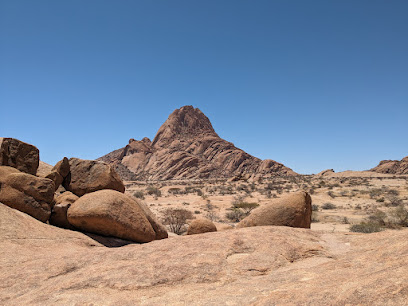
Bedding Boutique Swakopmund
Explore Bedding Boutique Swakopmund for exquisite bedding essentials that enhance your comfort and style during your stay in this charming coastal town.
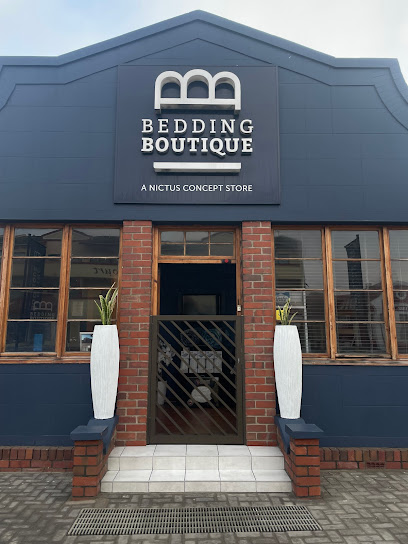
Little Loves Baby Boutique,
Discover stylish and quality baby clothing at Little Loves Baby Boutique in Swakopmund, the perfect destination for trendy parents.
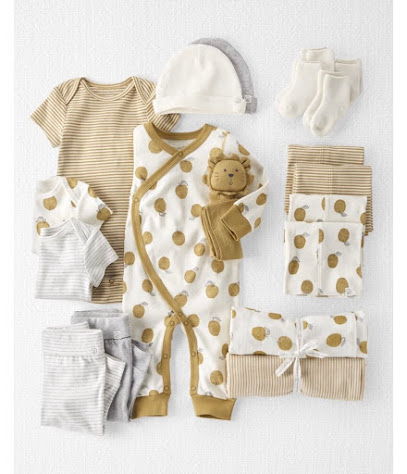
The Made in Namibia Collection
Explore Namibian artistry at The Made in Namibia Collection, a vibrant gift shop in Swakopmund offering unique handmade souvenirs and cultural treasures.

Art Africa
Discover the vibrant artistry and unique gifts at Art Africa in Swakopmund, where every purchase tells a story of Namibian culture.
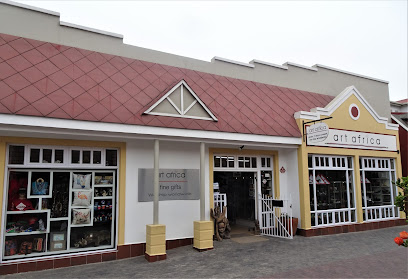
Essential bars & hidden hideouts
Swakopmund Brauhaus
Discover the taste of Germany in Namibia at Swakopmund Brauhaus, where authentic cuisine meets local charm.
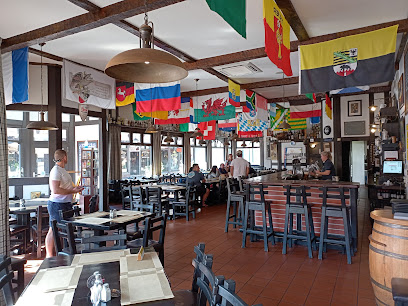
Village Cafe
Discover the charm of Village Cafe in Swakopmund, where exceptional coffee meets delightful breakfast in a cozy atmosphere.
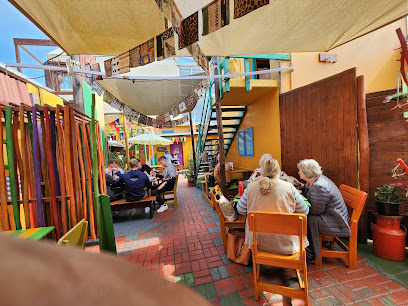
Jetty 1905 Restaurant
Discover the culinary delight of Jetty 1905 in Swakopmund; a seafood paradise with stunning ocean views and an unforgettable dining experience.
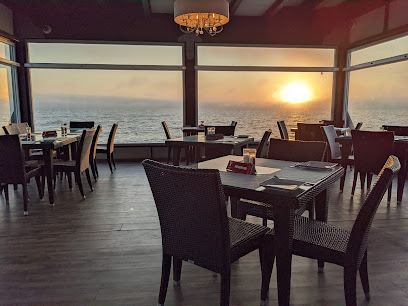
Brewer & Butcher
Discover the unique flavors of Namibia at Brewer & Butcher, a premier pub in Swakopmund known for its craft beers and delicious dishes.

Tiger Reef Beach Bar & Grill
Experience the best of coastal dining at Tiger Reef Beach Bar & Grill in Swakopmund, where fresh flavors meet stunning ocean views.
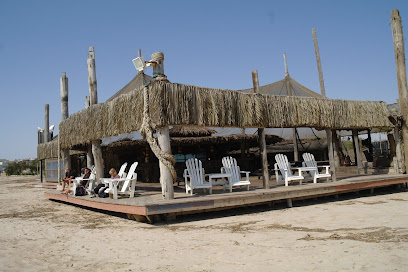
Kücki's Pub
Experience the vibrant flavors and lively atmosphere at Kücki's Pub in Swakopmund – the perfect dining spot for travelers seeking local cuisine.
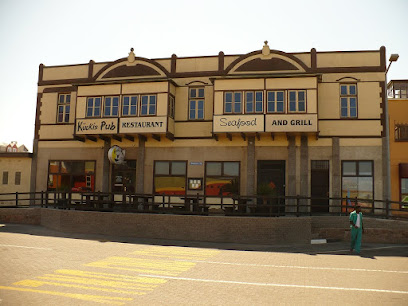
Farmhouse Deli
Experience the flavors of Namibia at Farmhouse Deli, a coastal gem in Swakopmund, where delicious food meets stunning ocean views.
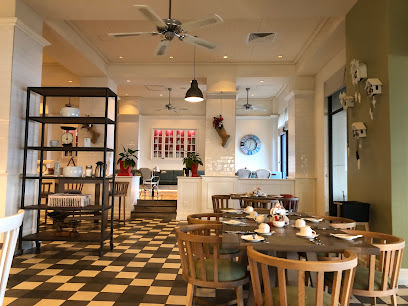
Desert Tavern
Experience the vibrant nightlife of Swakopmund at Desert Tavern, where refreshing drinks and a lively atmosphere await you.

Old Sailor Swakopmund
Experience the best of Swakopmund’s culinary scene at Old Sailor, where local and international flavors meet by the sea.
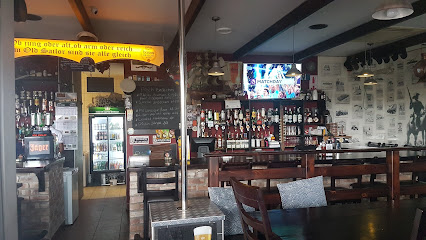
Infinity Lounge Swakopmund
Experience the vibrant nightlife at Infinity Lounge Swakopmund, a premier disco club perfect for dancing and enjoying the local scene.
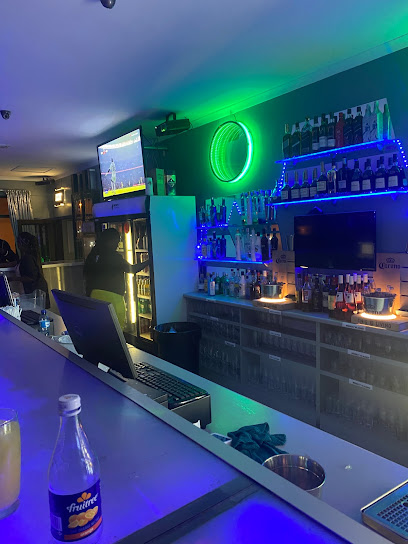
Spitzkoppe Community Restcamp
Experience unparalleled tranquility and breathtaking landscapes at Spitzkoppe Community Restcamp, a unique lodging destination in Namibia's stunning wilderness.
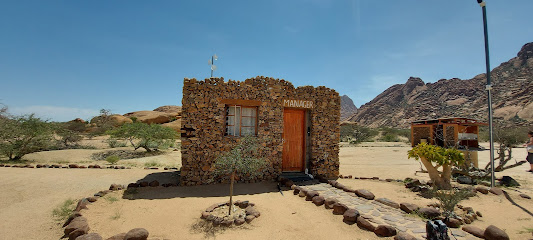
Skubbe Pub & Grill
Discover the heart of Hentiesbaai at Skubbe Pub & Grill, where local flavors meet vibrant nightlife in a welcoming atmosphere.

Bar Zonder Naam
Discover the charm of Bar Zonder Naam, a cozy wine bar in Swakopmund offering an exquisite selection of wines and delectable tapas in a relaxed atmosphere.
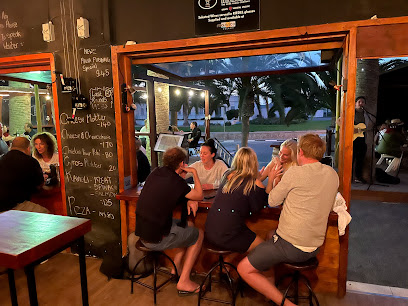
Ankerplatz Restaurant and wine bar
Discover Ankerplatz Restaurant and Wine Bar, a family-friendly haven in Swakopmund, offering exquisite cuisine and an extensive wine selection.
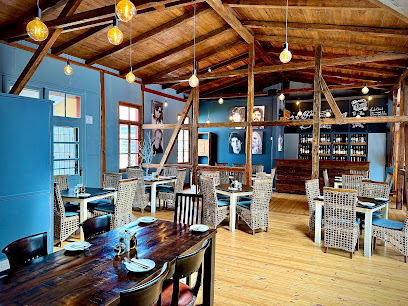
Spitzkoppe Tented Camp and Campsites
Explore the enchanting Spitzkoppe Tented Camp for a unique blend of adventure, culture, and breathtaking landscapes in the heart of Namibia.
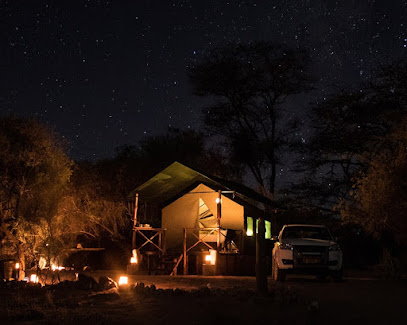
Local Phrases about Spitzkoppe
-
- HelloMoro
[Maw-roh] - GoodbyeTotsiens
[Tawt-see-ens] - YesJa
[Yah] - NoNee
[Nay] - Please/You're welcomeAsseblief
[Us-seh-bleef] - Thank youDankie
[Dunk-ee] - Excuse me/SorryVerskoon my
[Fehr-skoon may] - How are you?Hoe gaan dit met jou?
[Hoo gahn dit met yoh] - Fine. And you?Goed. En jy?
[Goot. En yay] - Do you speak English?Praat jy Engels?
[Praht yay Eng-els] - I don't understandEk verstaan nie
[Ayk verstahn nee]
- HelloMoro
-
- I'd like to see the menu, pleaseEk wil die spyskaart sien, asseblief
[Ayk vil dee spees-kart seen, us-seh-bleef] - I don't eat meatEk eet nie vleis nie
[Ayk ayt nee flays nee] - Cheers!Gesondheid!
[Geh-sont-hate] - I would like to pay, pleaseEk wil graag betaal, asseblief
[Ayk vil grah buh-tahl, us-seh-bleef]
- I'd like to see the menu, pleaseEk wil die spyskaart sien, asseblief
-
- Help!Hulp!
[Hulp] - Go away!Gaan weg!
[Gahn vehg] - Call the Police!Bel die Polisie!
[Bail dee Poh-lis-ee] - Call a doctor!Bel 'n dokter!
[Bail un dock-ter] - I'm lostEk is verlore
[Ayk is fuh-lor-uh] - I'm illEk is siek
[Ayk is seek]
- Help!Hulp!
-
- I'd like to buy...Ek wil koop...
[Ayk vil kohp] - I'm just lookingEk kyk net
[Ayk kike neht] - How much is it?Hoeveel kos dit?
[Hoo-feel kohs deet] - That's too expensiveDit is te duur
[Deet is teh doo-er] - Can you lower the price?Kan jy die prys verminder?
[Kahn yay dee prees fehr-min-der]
- I'd like to buy...Ek wil koop...
-
- What time is it?Hoe laat is dit?
[Hoo laht is deet] - It's one o'clockDit is een uur
[Deet is ayn oor] - Half past (10)Half tien
[Half teen] - MorningOggend
[Oh-ghend] - AfternoonMiddag
[Mit-ahk] - EveningAand
[Ahnt] - YesterdayGister
[Gis-ter] - TodayVandag
[Fun-duhg] - TomorrowMôre
[Moh-ruh] - 1Een
[Ayn] - 2Twee
[Tway] - 3Drie
[Dree] - 4Vier
[Feer] - 5Vyf
[Fayf] - 6Ses
[Says] - 7Sewwe
[Suh-wuh] - 8Agt
[Ught] - 9Nege
[Neh-guh] - 10Tien
[Teen]
- What time is it?Hoe laat is dit?
-
- Where's a/the...?Waar is die...?
[Vahr is dee] - What's the address?Wat is die adres?
[Vut is dee uh-driss] - Can you show me (on the map)?Kan jy my wys (op die kaart)?
[Kahn yay may vays (op dee kart)] - When's the next (bus)?Wanneer is die volgende (bus)?
[Vuhn-neer is dee fuhl-guhn-duh bus] - A ticket (to ....)'n Kaartjie (na ....)
[Un kart-kee (nah)]
- Where's a/the...?Waar is die...?
History of Spitzkoppe
-
Spitzkoppe, often referred to as the 'Matterhorn of Namibia,' is a group of bald granite peaks located between Usakos and Swakopmund in the Namib Desert. These peaks were formed over 120 million years ago through volcanic activity. The granite massifs were shaped by erosion over millions of years, creating the distinctive, sharp peaks that rise dramatically from the flat plains.
-
Spitzkoppe is home to ancient rock art created by the San people, who have inhabited the region for thousands of years. The rock paintings, found in various shelters and caves, depict animals, human figures, and mythical beings. These artworks offer invaluable insights into the San people's daily lives, spiritual beliefs, and interactions with their environment.
-
During the late 19th and early 20th centuries, the area around Spitzkoppe was explored by European colonizers. German settlers in Namibia, then known as German South West Africa, were particularly interested in the region for its unique geological features and potential mineral wealth. Although large-scale mining did not materialize, the colonial presence left a lasting imprint on the local culture and landscape.
-
During World War I, Namibia became a battleground between German forces and Allied troops, particularly those from South Africa. The rugged terrain around Spitzkoppe provided natural fortifications and was strategically significant for controlling the surrounding areas. Several skirmishes and military movements took place in the vicinity, contributing to the broader conflict in the region.
-
After Namibia gained independence from South Africa in 1990, efforts to preserve and promote the natural and cultural heritage of Spitzkoppe intensified. The area was designated as a conservancy, managed in collaboration with local communities. These conservation efforts aim to protect the unique geological formations, ancient rock art, and diverse flora and fauna, ensuring that future generations can continue to appreciate Spitzkoppe's historical and cultural significance.
-
In recent decades, Spitzkoppe has become a popular destination for adventure seekers, rock climbers, and cultural tourists. The establishment of campsites, guided tours, and visitor facilities has made it more accessible while maintaining its pristine environment. Tourism not only provides economic benefits to the local communities but also raises awareness about the importance of preserving this remarkable site.
Spitzkoppe Essentials
-
Spitzkoppe is situated in the Namib Desert of Namibia, roughly 180 kilometers from Swakopmund and 300 kilometers from the capital, Windhoek. The most convenient way to reach Spitzkoppe is by car. You can rent a vehicle at the Hosea Kutako International Airport in Windhoek and drive via the B2 highway towards Usakos, followed by the D1918 gravel road to Spitzkoppe. Public transportation options are limited, so self-driving is the best choice.
-
Once at Spitzkoppe, transportation options are minimal. The area is best explored on foot or by 4x4 vehicle if you wish to venture further into the surrounding desert. Tour operators in nearby towns like Swakopmund offer guided tours that include transportation to and from Spitzkoppe. There are no public buses or taxis operating within the immediate area.
-
The official currency of Namibia is the Namibian Dollar (NAD), which is pegged to the South African Rand (ZAR). Most transactions in Spitzkoppe are cash-based, so it is advisable to carry enough cash with you. Credit card facilities are not commonly available in the area. ATMs are located in major towns like Swakopmund and Windhoek, so ensure you withdraw sufficient cash before heading to Spitzkoppe.
-
Spitzkoppe is generally safe for tourists, but standard precautions should be taken. Avoid leaving valuables unattended and keep an eye on your belongings. There are no specific high-crime areas targeting tourists, but always be cautious, especially at night. It is also advisable to stay hydrated and wear sunscreen, as the desert environment can be harsh.
-
In case of an emergency, contact local authorities by dialing 10111 for police assistance and 10177 for medical emergencies. The nearest medical facilities are located in Usakos and Swakopmund. It is crucial to have comprehensive travel insurance that covers medical emergencies and evacuation. Local tour operators often have first-aid kits and basic medical supplies.
-
Fashion: Do wear lightweight, breathable clothing and sturdy hiking boots. Avoid wearing revealing clothing, as it is considered disrespectful. Religion: Do respect local customs and traditions, especially when visiting nearby communities. Public Transport: Do plan for self-transportation, as public transport is limited. Greetings: Do greet people with a friendly wave or a handshake. Eating & Drinking: Do bring your own food and water supplies, as there are limited facilities for purchasing them on-site. Avoid littering to preserve the natural beauty of the area.
-
To experience Spitzkoppe like a local, consider camping overnight at one of the designated campsites to enjoy the stunning stargazing opportunities. Join a guided rock climbing or hiking tour to explore hidden corners of the rock formations. Engage with local Damara people to learn about their culture and history. Don't miss the ancient rock paintings, which offer a glimpse into the area's rich past.
Nearby Cities to Spitzkoppe
-
Things To Do in Karibib
-
Things To Do in Omaruru
-
Things To Do in Swakopmund
-
Things To Do in Walvis Bay
-
Things To Do in Okahandja
-
Things To Do in Windhoek
-
Things To Do in Otjiwarongo
-
Things To Do in Outjo
-
Things To Do in Etosha Village
-
Things To Do in Tsumeb
-
Things To Do in Mariental
-
Things To Do in Oshakati
-
Things To Do in Ongwediva
-
Things To Do in Lüderitz
-
Things To Do in Keetmanshoop







